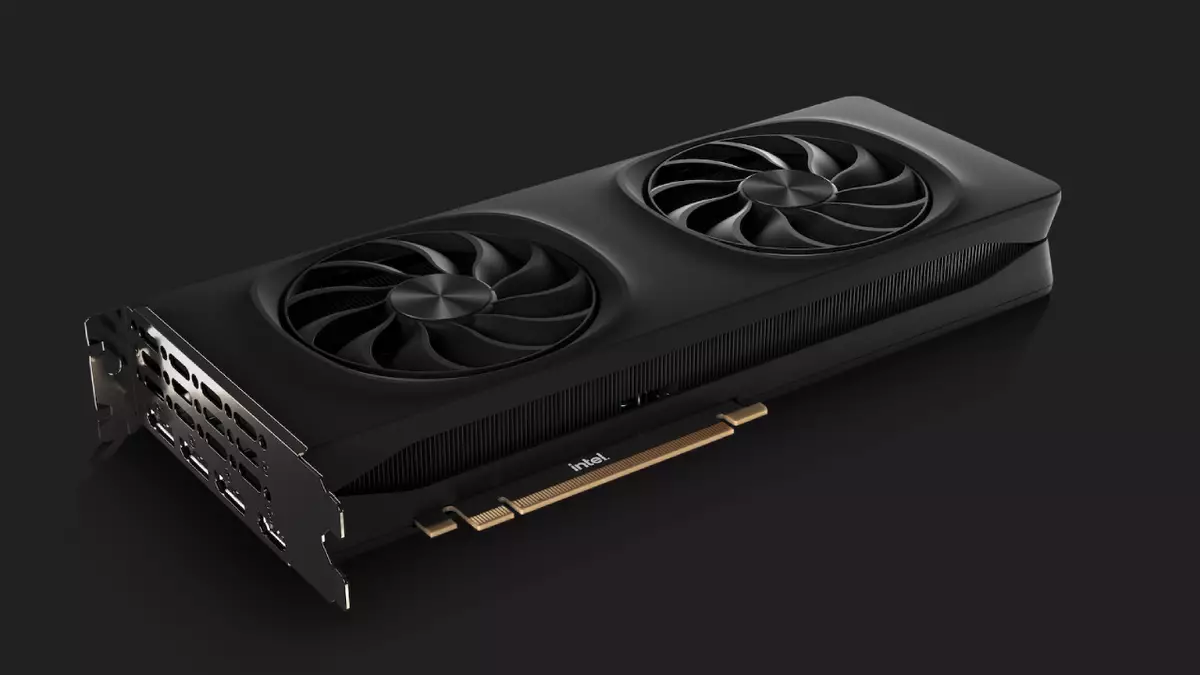The gaming industry is swift and unforgiving, where advancements in hardware determine who leads the pack. Intel has recently stepped into this heated arena with the launch of its second-generation gaming GPUs, codenamed Battlemage, exemplified by the Arc B580 and B570 graphics cards. While the excitement surrounding their arrival is palpable, several key aspects merit deeper scrutiny, particularly regarding competitive positioning and technological innovation.
The Battlemage GPUs, particularly the B580 and B570 models, have sparked interest, yet it is essential to note the company’s strategic focus on targeting Nvidia’s low-end RTX 4060 rather than aiming for higher-tier models. This choice raises questions about whether Intel is playing it too safely in a domain frequently characterized by aggressive competition. If Intel’s ambition is to challenge the gaming GPU market, why aim so low? While the B580 is designed to deliver impressive features, the decision to set sights on the lower-end segment could be seen as a missed opportunity to challenge Nvidia and AMD more directly.
The initial impressions of the Battlemage series indicate they could outperform AMD’s offerings concerning features, particularly in the realm of upscaling technologies. Intel’s introduction of XeSS 2 is noteworthy, especially with the addition of frame generation, making it comparable to Nvidia’s DLSS—an area where AMD has yet to establish a robust foothold with its non-AI-based scalers.
One of the standout features of the Battlemage GPUs is the sophisticated XeSS 2 upscaling technology. The inclusion of frame generation transforms this technology into a formidable tool for gamers, allowing for significant performance boosts in demanding scenarios. The potential for a performance jump from 48 fps to a remarkable 186 fps in F1 24 at 1440p is nothing short of astonishing. This staggering 3.9x uplift is indicative of the ambitious capabilities Intel has infused into its GPUs.
Another critical aspect is how Intel’s architecture, which includes XMX cores—AI accelerators designed to parallel Nvidia’s Tensor cores—allows it to leverage AI algorithms for improved image rendering. This technological edge positions Intel distinctly against AMD’s current catalog, which lacks this level of integrated AI functionality. Moreover, Intel has made strides to reduce latency through the introduction of the XeLL feature, akin to Nvidia’s Reflex technology. By significantly lowering latency in gaming scenarios, Intel not only enhances the overall player experience but also addresses a crucial element in competitive gaming.
The competition in the GPU space is fierce, especially among giants like Nvidia, AMD, and now Intel. While Intel’s offerings are seeking to match Nvidia’s achievements on paper, the real challenge lies in practical performance and user experience. With technologies like XeSS 2, Intel appears to promise a feature set that should theoretically rival Nvidia’s established stack. However, practical implementation remains to be seen—can Intel deliver reliable performance that matches its claims?
Conversely, AMD’s current strategy, which emphasizes a non-AI-based approach, seems increasingly outdated as more products lean on machine learning capabilities. The gap between these technology approaches underscores a critical juncture in the battle for GPU supremacy: features alone will not suffice; execution and user feedback will be pivotal in determining market success.
As Intel rolls out its Battlemage GPUs with ambitious features and innovative technologies, the industry awaits concrete evidence of their performance in real-world scenarios. While claims of substantial performance lifts and reduced latency are promising, skepticism naturally arises from the market’s history of bold promises that did not translate into solid end-user experiences. Only time will tell whether Intel’s foray into the gaming GPU market will result in a seismic shift, but one thing is clear: the competitive landscape is growing richer and more nuanced as companies adapt and innovate in their fight for dominance. The forthcoming months will be critical as gaming enthusiasts and industry analysts meticulously examine Intel’s claims against real data and performance benchmarks.

